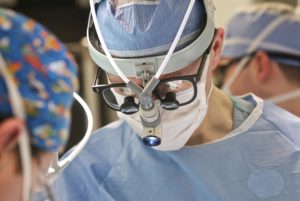 Face transplants are still infrequent enough that every one of them is considered a remarkable feat of medical collaboration and expertise. However, they no longer garner the news headlines that the first transplant did when it was performed in France in 2005.
Face transplants are still infrequent enough that every one of them is considered a remarkable feat of medical collaboration and expertise. However, they no longer garner the news headlines that the first transplant did when it was performed in France in 2005.
At Brigham and Women’s Hospital, nine full or partial face transplants have been performed since 2009, more than at any other U.S. hospital. Otolaryngologist Donald J. Annino, Jr., MD, DMD, and plastic surgeon Bohdan Pomahac, MD, have been significantly involved with all nine of the procedures.
“Regardless of what caused the injury that led to the need for transplant, by the time these patients come to us, they usually have already endured a dozen or more reconstructive surgeries,” Dr. Annino said. “They must have significant cosmetic and functional difficulties to be considered for a transplant.”
As a surgeon with both medical and dental degrees, Dr. Annino is positioned to address the unique challenges that come with transplanting all or part of the jaw. “Sometimes it’s just skin and muscle that need to be replaced, but other times bones are also transplanted,” he said. “The bony structures may not match up, so we may have to modify them to get the patient’s occlusion, or their bite, lined up as closely as we can.” This is central to restoring someone’s ability to speak and eat.
An important part of a face transplant procedure is determining which parts of the face will need to be harvested from the donor. “We have multiple meetings where we evaluate the patient and determine which structures need to be part of the transplant,” Dr. Annino said. These may include skin, muscle and bone from the cheeks, nose, upper and lower jaw, and chin.
Annino and the Brigham team also use 3-D planning and 3-D printing to help determine what is needed from the donor. Throughout the procedure, close communication with the members of the team who perform the harvesting is essential to ensure that all the necessary parts are obtained.
Finding an appropriate donor for a face transplant is another part of the challenge. Unlike with an organ transplant, in which tissue matching and donor age are the primary considerations, other issues when matching a face donor include skin tone and gender.
To establish a face transplant program, a hospital must already have a busy and successful organ transplant program, Dr. Annino noted. “It’s important to have transplant surgeons, plastic surgeons, anesthesiologists, infectious disease specialists, physicians and nursing staff who are experienced in dealing with all the complications that can arise,” he said. “Up to 30 people are involved in the transplant procedure itself, not to mention the countless other members of the hospital’s staff who work with these patients during the duration of their hospital stay and recovery.”
Facial transplant procedures at the Brigham are done under the aegis of the Center for Facial Reconstruction within the Division of Plastic Surgery, which also performs facial reconstruction to address burns, congenital conditions and other defects related to disease or trauma.
Dr. Annino’s primary surgical focus is removing head and neck tumors and subsequent reconstructive surgeries, which may include transplanting bone and muscle from another part of a patient’s body to replace tissues that have been removed due to cancer.
“I use the skills and expertise that I’ve developed in treating cancer patients and adapt them to performing face transplants,” he concluded. “In both types of procedures, you are helping to improve someone’s appearance as well as functions like eating, which contribute greatly to a person’s quality of life.”